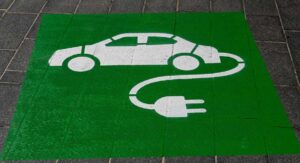Transmissions in Electric Vehicles: How They Differ from Conventional Transmissions
As electric vehicles (EVs) continue to gain popularity and become an integral part of the automotive landscape, understanding their key components is essential. Among these components, the transmission system in electric vehicles differs significantly from conventional internal combustion engine vehicles. Let’s dive into the differences between transmissions in electric vehicles and those found in traditional cars powered by internal combustion engines.

Absence of Traditional Gear Transmission:
Unlike conventional vehicles with internal combustion engines that require multi-speed transmissions (manual or automatic) to manage various gear ratios, most electric vehicles operate without a traditional gearbox. Instead, EVs typically use a single-speed transmission or, in some cases, a fixed-ratio transmission. The electric motor’s design and characteristics often allow it to generate maximum torque over a wide range of speeds, eliminating the need for multiple gears to accommodate different driving conditions.
Direct Drive and Reduction Gearbox:
Electric motors in EVs can produce high torque when they start spinning. As a result, many electric vehicles utilize a direct drive system or a reduction gearbox. These systems enable the electric motor to efficiently transfer power to the wheels without requiring gear changes. Reduction gearboxes help optimize the motor’s RPM to the optimal speed required for the wheels, enhancing efficiency and performance.
Simplicity and Efficiency:
The absence of a complex multi-speed transmission in electric vehicles leads to a more straightforward drivetrain design. This simplicity reduces the number of moving parts, minimizes energy losses, and enhances overall efficiency. Electric vehicles often offer a smoother driving experience without the need for frequent gear shifting.
Regenerative Braking Integration:
Electric vehicles commonly incorporate regenerative braking systems that use the electric motor to slow down the vehicle while simultaneously converting kinetic energy into electrical energy. Unlike traditional vehicles that rely primarily on friction brakes, EVs can recuperate energy during braking and send it back to the battery for storage. Integrating regenerative braking systems impacts the transmission design and how energy is managed within the vehicle.
Software-Based Control:
In electric vehicles, sophisticated software systems often control the motor and power distribution. These control units manage the power delivery, torque output, and other essential functions related to power transmission from the battery to the wheels. Software algorithms optimize efficiency, manage energy flow, and adapt to real-time driving conditions, enhancing the vehicle’s overall performance.
Electric vehicles represent a paradigm shift in automotive technology, including how power is transmitted to the wheels. The absence of traditional multi-speed transmissions in favor of simpler, more efficient systems tailored to the characteristics of electric motors is a defining feature of EVs. Understanding these differences helps us appreciate the unique engineering behind electric vehicles and their increasingly prominent role in the future of transportation.
Did you know that [atc] has been the transmission experts for over 50 years in Augusta, GA? Schedule a transmission service today or stop in if you have transmission related questions.

